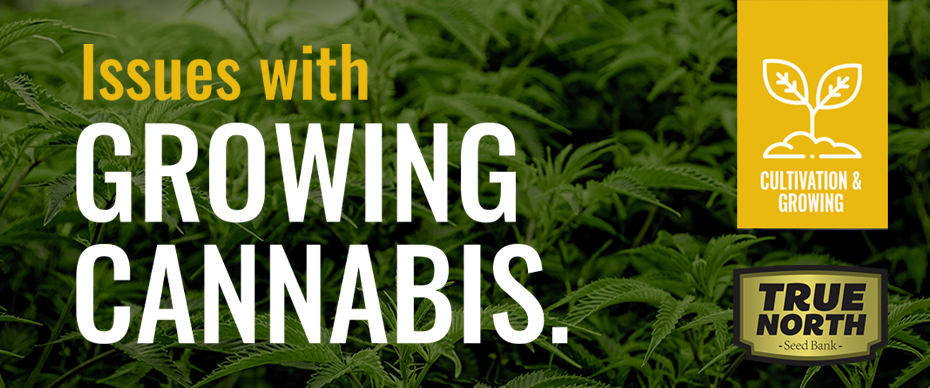
Cannabis plants come in many strains. Most of them are sensitive to external factors.
Several issues are associated with the growing of cannabis, such as pests, mould, and nutrient burn. Even other factors such as light intensity, the soil’s pH, the air’s humidity, or water uptake must be thoroughly considered.
Read further to know more about the issues and multiple factors impacting cannabis growth.
How Much Does It Cost To Grow One Cannabis Plant?
There are many costs associated with growing cannabis including equipment, nutrients, as well as the seeds or clones themselves.
However, the cost of growing cannabis indoors and outdoors is very different.
Indoor Growth
If you're a first-time indoor cannabis grower, the start-up costs can be high because you'll need to set up the farm and purchase costly equipment like timers, grow lights, filters, gardening supplies, and exhaust fans.
If you have nosey neighbours, check out these low-odour cannabis strains perfect for cultivating indoors.
The total cost can be in the hundreds of dollars due to other expenditures such as lighting, ventilation, water, fertilizers, and so on,
Indoor basic growing kit from amazon can cost a total of $80, including three seeds, soil, one fan, a 125-watt light, and 3-gallon containers.
To facilitate indoor growing and reduce costs, you can begin with grow-up starter kits to get for under $300.
These kits come with all the supplies you need from germination to harvest, and they include free how-to-grow videos and a 24/7 hotline which you can call, text, or mail for all your queries.
However, making your own super soil is recommended and it's not that difficult. Check out this easy-to-follow DIY on how to make soil your cannabis plants will love.
Outdoor Growth
Growing cannabis outdoors is the less costly choice, but it will require more time and effort in the long run.
Cannabis grown outdoors needs special care and attention due to its sensitivity to elements and pests.
Therefore, it would be a great option if you have a lot of time but not significant capital.
It should also be noted that plants, containers, and gardening equipment would still need to be purchased, but lighting costs are effectively eliminated.
However, more money will be paid in water bills because growing outdoors will make the plant more exposed to sunshine.
How pH Can Affect Your Cannabis Plants
Cannabis plants can only uptake nutrients from the soil within the narrow pH range of 6 and 7.
However, for hydroponics and aeroponics, the pH range is between 5.5 and 6.5.
Above pH 7, an alkaline medium, the roots cannot uptake specific nutrients like iron, copper, or manganese resulting in nutrient deficiency.
There is even the possibility of developing a plant disease where a yellow colour appears on the young leaves.
With a too acidic pH nutrient, a lockout can occur when cannabis plants absorb no nutrients.
Essential nutrients such as nitrogen and phosphorus cannot be absorbed, and stunted growth occurs.
As the soil environment in which cannabis usually thrives during the wild is typically slightly acidic, homegrown cannabis plants also prefer a slightly acidic medium.
The benefit of maintaining the optimum pH of about 6.5 will result in vigorous growth and, as a result, better harvests of premium quality.
We should also note that a neutral pH can cause the cannabis leaves to turn purple during flowering.
How Humidity Can Affect Your Cannabis Plants
Controlling humidity can be challenging for some growers.
The rapid temperature drops into the night cause humidity to rise, frequently to dangerous levels.
Daytime heat, or heat from lighting, causes humidity to drop, which can cause thirsty plants to wilt.
However, the temperature is only one aspect to remember when it comes to maintaining humidity; others also.
Upon putting the seedlings into the soil, the humidity should be at 70%.
The optimum humidity reduces gradually as the cannabis plant grows until harvest, where optimum moisture is 40%.
The average humidity range used is about 60 to 75 percent for indoor cultivation for all growth stages.
Low Humidity
The plant draws water from the soil at a very high rate when the humidity is very low.
When the humidity is too low, the plant cannot draw water at a rate equal to the loss through the stomatal openings.
Water loss is high due to the high water gradient generated between the plant and the surrounding air.
The cannabis plant will prevent this by closing the stomata, which will jeopardize the essential respiration process.
Respiration is hampered because of the slowing of the photosynthetic process resulting from carbon dioxide limitations.
Therefore, there is tension, slowed growth, and reduced yield.
The plant will wilt and die in extremely low humidity because even its defence mechanisms will not compensate for the water stress caused by the lack of ambient water.
Low humidity and dry conditions also attract spider mites
High Humidity
Since transpiration is slowed by the smaller-than-normal water gradient between the plant and the atmosphere when humidity is too high, the rate at which plants draw water from the soil is decreased.
As the rate at which the plant draws water from the soil decreases, nutrient uptake efficiency is reduced, resulting in deficiencies.
We can observe this phenomenon, especially in calcium uptake.
Furthermore, because of altered chemical interactions under elevated pH conditions, saturated media pH has a propensity to rise over time, making several nutrients (e.g., metals, phosphorus, and calcium) inaccessible to the plant.
High humidity is awful for the plants' health.
The combination of high humidity levels and warm temperatures found in some indoor cannabis cultivation operations can promote widespread mold growth.
Mould spores in the air may pose significant health risks to occupants of these structures, including allergies.
Mould can even entirely ruin the whole crop.
We can control the plant’s humidity by using ventilation to reduce moisture or increasing water intake to increase humidity.
How Lighting Can Affect Your Cannabis Plants
since light is needed to carry out photosynthesis, lighting is another significant factor for cannabis plants to grow.
The higher the light intensity, the better it is for your girls.
However, if light sources are put too close, it may result in light burns.
Growers cannot put them in light for 24 hours as cannabis plants need to be in darkness to form buds.
Cannabis plants need adequate light to grow. Three to four hours of direct sunlight are usually the bare minimum required.
For instance, if you want the plant to grow very large before it flowers, you need to maintain the light source for more than twelve hours for optimum growth.
Later on, during flowering, less than twelve hours of lighting is required for the plant as it has already grown and achieved optimum size.
Besides, the colour of light can impact cannabis growth.
During germination and vegetative propagation, blue light is used as it promotes chlorophyll eventually used for photosynthesis.
A red light is perfect for flowering as it indicates the plant that it reaches near the end of the season.
How Water Can Affect Your Cannabis Plants
Water is essential for the growth of cannabis plants and fundamental to carrying out photosynthesis, necessary for plant growth.
Water is also crucial in the cooling down of the plant.
With appropriate watering of the cannabis plants, there is a high yield and more rapid growth.
However, we should be cautious as too much water can be potentially dangerous for cannabis plants.
Excess water may hamper the growth of valuable microbes and increase the population of harmful microbes, releasing alcohol, therefore, damaging the roots.
Overwatering can even obstruct oxygen intake.
It appears as the drooping of leaves or through the change of colour of leaves to yellow.
The leaves can curl up with the excess water, reducing the surface area for photosynthesis.
The plant may slow or completely stop growing in overwatered conditions because of the lack of oxygen in the roots resulting from anaerobic respiration.
Drainage should be used to prevent this from happening.
Underwatering can be equally dangerous for cannabis plants.
Without the appropriate amount of water, the plants will dry up and wilt. Eventually, plant death will be followed, leading to the loss of the harvest.
About the author: Heather Burton
Heather lives with her husband and two children in beautiful British Columbia. Her passion has always been to enhance the lives of others by helping them reach their business goals.
Content management is her specialty, and writing is what she does best. Working specifically in the cannabis market, Heather strives to help dispensaries, patients, doctors, manufacturers and recreational users by giving them the voice they need. When she is not writing, you can find her anywhere outdoors and away from the screen.












